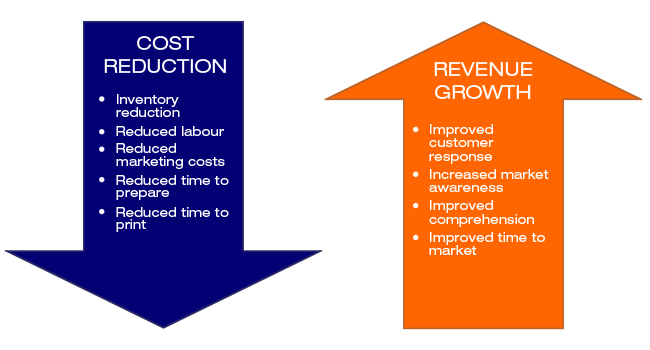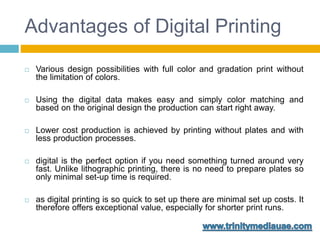Some Known Questions About Digital Printing.
Some Known Questions About Digital Printing.
Blog Article
Top Guidelines Of Digital Printing
Table of Contents10 Simple Techniques For Digital PrintingThe Main Principles Of Digital Printing The Ultimate Guide To Digital PrintingGetting My Digital Printing To WorkThe 15-Second Trick For Digital Printing5 Easy Facts About Digital Printing Described
Variable data printing, such as direct mail with individualized codes and addresses, is preferably fit for digital printing. Digital quick printing just needs four steps of design, evaluation, printing and binding to get whatever done. Digital fast printing has an unmatched benefit: print on demand.According to PMMI, electronic printing permits brands and makers to react swiftly to client needs while improving the supply chain, reducing warehousing cost and waste, and delighting in faster time to market. That all audios excellent, yet exactly how does this modern technology do all that? The significant differentiator of these innovations is that there are no set-up costs and no plates with electronic printing.
Get This Report about Digital Printing
According to Wikipedia, the best difference between digital printing and standard techniques such as lithography, flexography, gravure, or letterpress - Digital Printing is that there is no need to replace printing plates in digital printing, whereas in these analog printing approaches the plates are repetitively changed. This results in quicker turn-around time and decreases price when using electronic printing.
Quick manufacturing indicates getting your product to market much faster. It additionally suggests it's easier and faster to make changes later, when you change a dish, add a SKU, or develop seasonal packaging. Digital printing is very versatile, so it's very easy to make adjustments to the plan style promptly. Everything returns to home plates.
Much more stock can imply even more waste later on. With traditional printing techniques, short-run printing is just not feasible. Due to the fact that a terrific style can make or damage your item, digital printing regularly develops premium, clear and colorful graphics each time. Digital printing on flexible bags includes the intense, dynamic, and exact graphics that virtually bid customers to connect and touch them.
Digital printing is the procedure of printing digital-based images straight onto a range of media substrates. There is no requirement for a printing plate, unlike with offset printing. Digital data such as PDFs or desktop computer publishing documents can be sent straight to the digital printing press to publish theoretically, picture paper, canvas, fabric, synthetics, cardstock and other substratums.
Our Digital Printing PDFs
According to PMMI, electronic printing enables brand names and suppliers to respond quickly to consumer demands while boosting the supply chain, lowering anchor warehousing expense and waste, and enjoying faster time to market. That all noises fantastic, yet exactly how does this technology do all that? The significant differentiator of these technologies is that there are no set-up fees and no plates with electronic printing.
According to Wikipedia, the best distinction in between digital printing and standard approaches such as lithography, flexography, gravure, or letterpress is that there is no need to change printing plates in electronic printing, whereas in these analog printing methods home plates are repetitively changed. This results in quicker turnaround time and decreases cost when making use of electronic printing.

Digital Printing Fundamentals Explained
With traditional printing methods, short-run printing is simply not possible. Due to the fact that a fantastic design can make or damage your product, digital printing consistently develops top quality, clear and vivid graphics each time.

According to PMMI, electronic printing permits brand names and makers to react quickly to client needs while boosting the supply chain, decreasing warehousing expense and waste, and taking pleasure in faster time to market. That all noises fantastic, however how does this technology do all that? The major differentiator of these modern technologies is that there are no set up costs and no plates with digital printing.
Digital Printing Fundamentals Explained
This results in quicker turnaround time and decreases cost when making use of electronic printing.
Digital printing is extremely adaptable, so it's simple to make changes to the bundle style quickly. It all goes back to the plates.

4 Easy Facts About Digital Printing Shown
Digital printing is the procedure of printing digital-based images straight onto a selection of media substratums. There is no need for a printing plate, unlike with offset printing. Digital files such as PDFs or desktop posting data can be sent out straight to the digital printing machine to publish on paper, photo paper, canvas, textile, synthetics, cardstock and other substratums.
Report this page